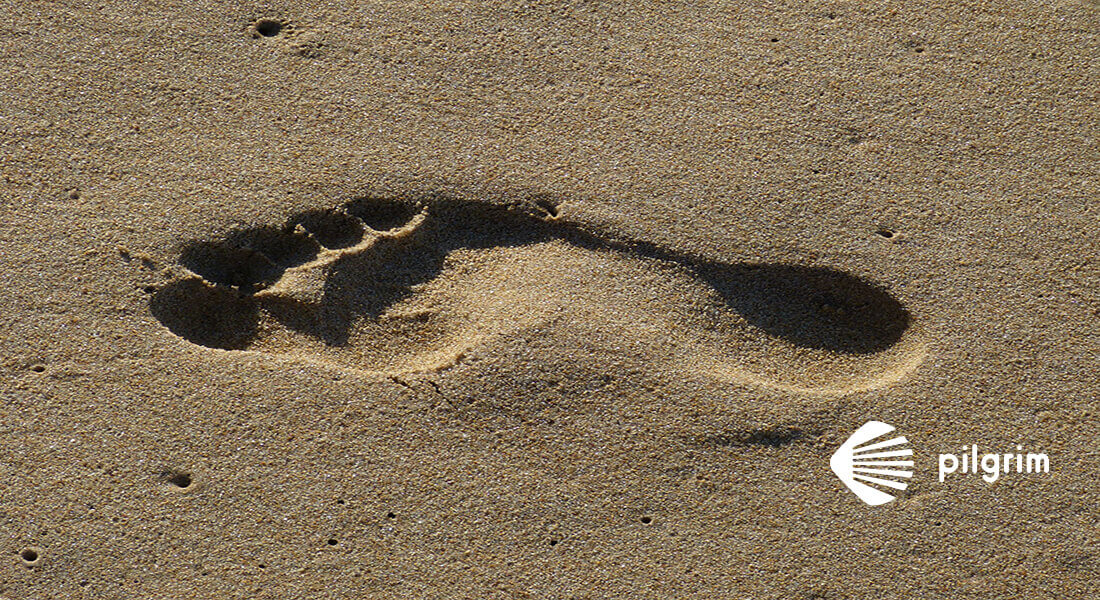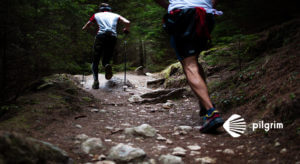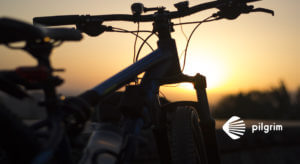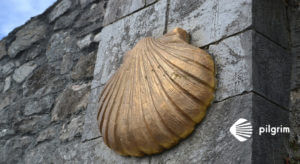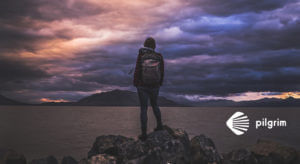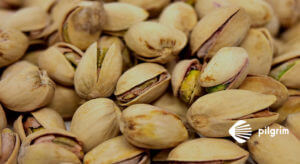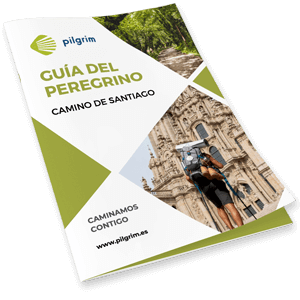As any good pilgrim knows, your lower limbs are your best allies along the pilgrimage.
That is why it is very important to know how to take care of your feet to do the Camino de Santiago and thus avoid the appearance of certain ailments and injuries that can disrupt the preconceived times to carry out the walk.
YOU CAN ALSO BE INTERESTED: WHAT TO TAKE IN MY BACKPACK TO DO THE CAMINO DE SANTIAGO?
With this post we intend to give you the key points so that your feet remain your best allies and not your worst enemies and therefore make your Camino a little bit easier.
TIPS FOR TAKING CARE OF YOUR FEET DURING THE CAMINO DE SANTIAGO
As we have said on countless occasions, special attention should be paid to both footwear and socks.
Our recommendations to successfully complete the Camino de Santiago and that you do not lose your feet in the attempt are:
VASELINE FOR FEET BEFORE EVERY STAGE
We will use Vaseline before going for a walk, in this way our foot will be completely hydrated, eliminating friction with the boot or shoe.
The consequence of this is that the less friction, the less blisters or abrasions we will suffer on our feet.
CHOICE OF FOOTWEAR
We are well aware of how heavy we can be with this issue, but it is really a fundamental part to avoid the inconveniences that it can cause.
The most suitable footwear are hiking boots or trekking shoes depending on the time of the year we have chosen to do the Camino de Santiago.
As you all know, it is very important that the footwear, whatever it is, has been worn before starting the hike:
- Hiking boots: Ideal if we are going to do the Camino in the coldest months of the year. This way we will keep our feet protected from inclement weather and also we will wear them well fastened, so it will be easier to cross all kinds of surfaces without any concern.
- Trekking shoes: Perfect for the warmer seasons (spring and summer). They do not offer the same protection as hiking boots, but in exchange they give us greater freedom of movement and the possibility of keeping our feet cooler.
SOCKS MATTER TOO
We know that this won’t come as a surprise either, as we have repeated it ad nauseam, but we know for a fact that socks can be the main cause of the feared blisters,as they are the first layer and the only one that is in direct contact with our feet.
Anti-blister socks
To avoid the growth of fungus and blisters, we recommend carrying two or three pairs of anti-blister socks or CoolMax socks in your backpack so that you can exchange them as soon as they start to get damp.
WE MUST HAVE A SMALL FIRST AID KIT
It is important to have a first aid kit with basic foot care items such as these:
- Alcohol or any other disinfecting agent (Antiseptic)
- Gauze for any kind of bandage in case of injury
- Foot moisturising cream
- Wound ointment
- Suture needle (in case of large blisters)
- Vaseline
CORRECT HYDRATION OF THE FEET
It is essential to apply a normal moisturiser after every walk, or any other moisturiser indicated for tiredness or muscle relaxation in this part of the body.
TAKING CARE OF YOUR FEET AFTER EACH STAGE
Otherwise we are sure that the next day’s stage will be a bit more difficult.
On arrival at the accommodation we will wash our feet properly, removing any remaining dirt and then dry them thoroughly and apply moisturising creams or Vaseline, leaving them to dry in the air.
We also recommend sleeping with bare feet, otherwise we will soften the skin and encourage the appearance of blisters.
MOST COMMON INJURIES AND AILMENTS ON THE CAMINO DE SANTIAGO: HOW TO TREAT THEM?
Below, we will talk about some of the most common injuries that arise among pilgrims who walk the different routes of the Camino.
BLISTERS
Definitely the most common injury on the Camino de Santiago, and is that unfortunately there are few pilgrims who can claim not to have suffered from them.
They are caused by excessive friction on the skin, typically as a result of boots that have been worn for a short period of time or that are poorly adjusted to the foot when walking.
All the tips mentioned above will be useful to avoid the appearance of the famous blisters.
The procedure we will follow to treat them once they have appeared is as follows:
- Thoroughly washing the foot: To remove traces of sweat and dirt that appear after a long walk.
- We disinfect the injured area: With povidone iodine (Betadine).
- Cut the blister: Cut through the central area and remove the skin covering the blister.
- Wash the area where the blister is located: With plenty of physiological solution.
- Let it air-dry: apply plenty of antibiotic ointment and then cover it with gauze and sticking plaster.
After this process, daily dressings must be carried out to prevent infection or the appearance of major complications. If this process is carried out, the affected area will be fully recovered in 5 or 6 days.
SPRAINS AND STRAINS
Pilgrims are susceptible to sprains and falls, due to the changes in level, which often result in sprains, generally of a minor nature.
The most common symptoms are pain, swelling and inability to continue, depending on the severity of the condition.
The joint most commonly affected by this type of injury is usually the ankle, specifically the external lateral ligament.
If the strain or sprain is mild
The pilgrim can continue the Camino applying cold and a functional bandage, always in prior consultation with a specialist, as this type of bandage can have a reverse effect and end up damaging the affected joint to a greater extent.
If the injury is moderate or severe
If we suffer from severe pain, swelling and suspect that the ligaments or joints may be affected, we should go to a medical centre to have the injury assessed by specialists so that the appropriate measures can be taken to prevent the ailment from getting worse.
This ailment affects 17% of pilgrims and is difficult to prevent as sprains and strains occur as a result of involuntary acts, even so some methods to avoid these injuries to a certain extent are:
- Wear mid-calf shoes: Sneakers or boots that support the ankle firmly, with a good sole and a system that favours perspiration.
- Use both trekking poles: They minimise the impact on your joints, and on descents with loose stones they will help you to maintain stability and thus reduce the risk of falling.
- Warm up well: Every day we should spend about 15 minutes warming up and stretching all the muscles before starting to walk, this will prevent a good number of injuries.
TINEA PEDIS (ATHLETE’S FOOT)
It is an affliction caused by the appearance of fungus on the feet, it is really very annoying as its manifestation is produced by the appearance of small wounds between the toes causing a lot of itching to those who suffer from it.
Good hygiene and not exchanging clothes with other partners is key to avoid its occurrence.
Once they have already manifested themselves we will apply anti-fungal lotions or creams, although sometimes simply using anti-fungal powders on footwear, socks and any other garment that will come into contact with our feet is enough.
In the event that the condition occurs as a result of excessive sweating, treatment should be applied to prevent this excessive sweating in order to avoid future occurrences of this ailment.
The use of flip-flops is fundamental to avoid the appearance of fungus, always, and when we say always, it is always, we should use rubber sandals to enter any public or shared bathroom.
ONYCHOCRYPTOSIS AND SUBUNGUAL HAEMATOMAS
Onychocryptosis is what is commonly known as ingrown toenail.
To avoid the appearance of such an affliction we should always cut our toenails properly, leaving them straight with a free and wide edge.
To eliminate this condition, we must be extremely hygienic in the area and place a small piece of gauze soaked in iodine under the lateral area of the ingrown nail, trying to separate the nail from the flesh to prevent it from continuing to stick while protecting this area from rubbing.
Subungual haematomas arise as an accumulation of blood under the nail causing it to turn black. They appear as a result of the friction of the upper part of the nail with the boots due to the ups and downs of the ground, this causes the blood to spill and accumulate, thus forming the haematoma.
The ideal is to act before the blood dries under the nail, by pricking the nail with a hot, sterilised needle to pierce it and drain the accumulated blood.
IN CONCLUSION…
We really hope that you do not need to apply these tips and have a pleasant and injury free Camino de Santiago, even so you know, they always say that prevention is better than cure and just in case you already have all the necessary information to finish your Camino in case you have suffered from these injuries.
If there is one thing that is clear to us, it is that it is impossible to stop the desire to finish this experience that will undoubtedly change your lives forever.
In case you have any unforeseen event on the Camino, in the form of injury or contracture, us at Pilgrim, we have reliable physiotherapy clinics all along the Pilgrim’s Way to help you with your problem. Do not hesitate to call us!
Ultreia Pilgrims!
